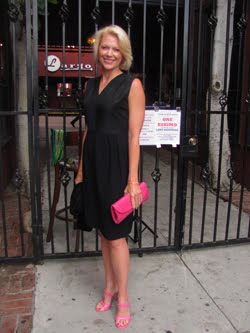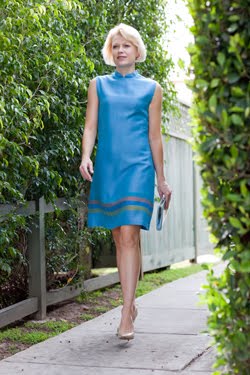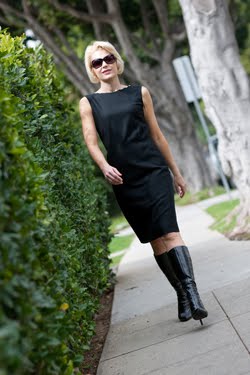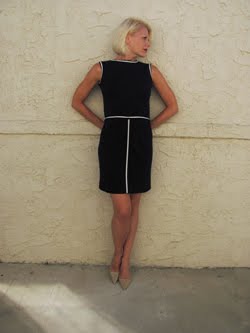Much of the pleasure in sharing Why Change Your Wife? (1920) with audiences is showing how early it comes in the history of film yet how enduring it is as an influence in the history of fashion. For my classes, presentations, and webinars, 1920 is the year I chose as a mark of when our modern fashion began. One could go a bit earlier and find similar style to be sure, but Why Change Your Wife? features such great examples of fashion from this time. The early part of the 1920s was very different from the late 1920s, and it's fascinating to see where design was in its transition from Gibson Girl to Flapper. Fabrics like velvet and silk brocade were deftly draped over the body, which rebelled against earlier restricted corseted clothes and led the way to loose-fitting dresses by end of the decade. Designs also became much more revealing, from showing off shoulders to using slinky straps and baring the back.
In my opinion, no one embodied this time and its style better than Gloria Swanson. 1920 was perhaps the peak of her power in Hollywood and audiences absolutely adored her. Read my recent article on Why Change Your Wife? and you'll begin to understand all the reasons why. The world watched to see what she would wear both on and off the silver screen. Fashion followed what she made popular, which is true both then and now. Donna Karan is but one designer today who references this style again and again in her own collections. Just look at some examples of how modern fashion continues to be inspired by Gloria and the costume design of Clare West in 1920's Why Change Your Wife?.
ABOVE: one-shouldered trend at the 2008 Oscars
inspired by Gloria's gown from her magical movie makeover (below)
Gloria's dramatic dress touches upon another trend--the high-thigh slit--
which Angelina Jolie revisited in Versace for her grand entrance at the 2012 Oscars
The high-thigh slit trend then flooded fashion in 2012 and hasn't stopped since
Gloria in another one-shouldered gown, a look that she made popular in the early 1920s
that carried into the 1930s and beloved by stars like Kay Francis (below)
Similar styles from Halston in the 1970s (above)
and Lanvin on Linda Evangelista in 2008
This velvet off-the-shoulder gown has inspired many in fashion,
especially Donna Karan and her iconic "cold shoulder" gowns (below)
Donna's "cold shoulder" gowns started in the 1990s and continue today (above from 2013),
a now classic design that has inspired many others like Ricki Freeman's velvet version (below)
The backs of Gloria's gowns are equally inspirational--another example from Donna Karan,
this time for Nina Debrov (in a design originally for Gwyneth Paltrow's green gown in Great Expectations)
Another great example of enduring early 1920s style--though even more revealing--
is this Golden Globes gown for Jennifer Lopez by Marchesa
Even Gloria's hair and accessories have continued to be inspirational,
including modern fashion icon Nicole Richie who repeatedly references the early 1920s in her own style





































































































4 comments:
I'm really enjoying these posts on Gloria Swanson and her incredibly influential style. It's made me admire her all the more.
KImberly - the early 1920s Hollywood cfilm styles were particularly reviled in the Eastern fashion press. While some costumes were over the top, others set the trends. Unfortunately many of these silent movies are completely lost to us. Thanks for this interesting post.
Thanks Silver Screenings! I love doing them. She is way too overlooked by people--in film, but especially fashion--while being super influential. I enjoy learning more about her.
Thanks Christian! Yes, the early costumes definitely swung more toward being over-the-top simply to distinguish themselves from anything in the stores. I think costume designers quickly realized that they didn't have to go quite so far with their design to still make a very strong statement.
Post a Comment